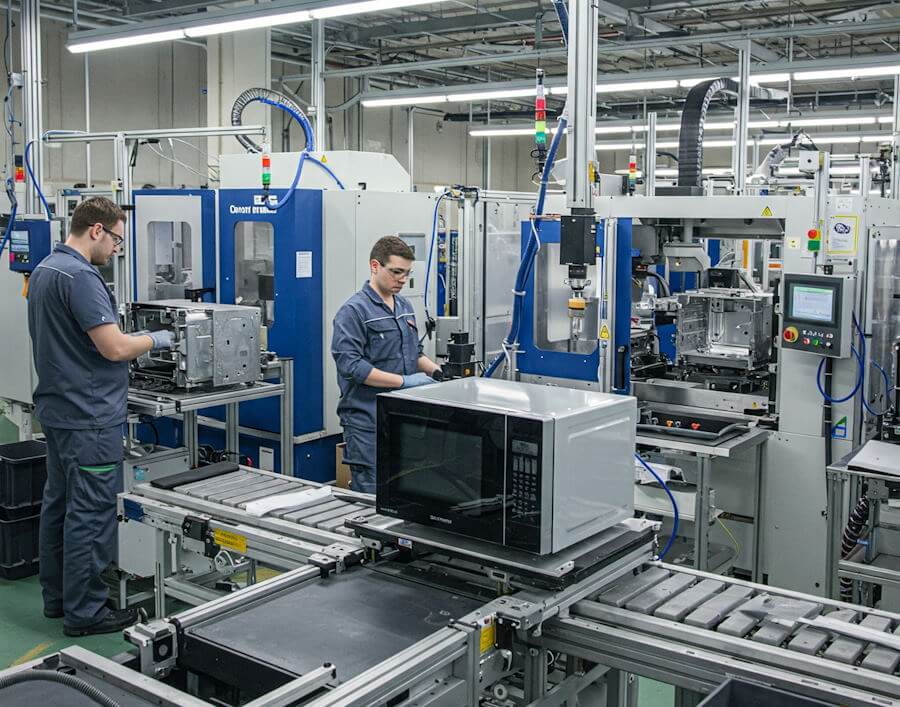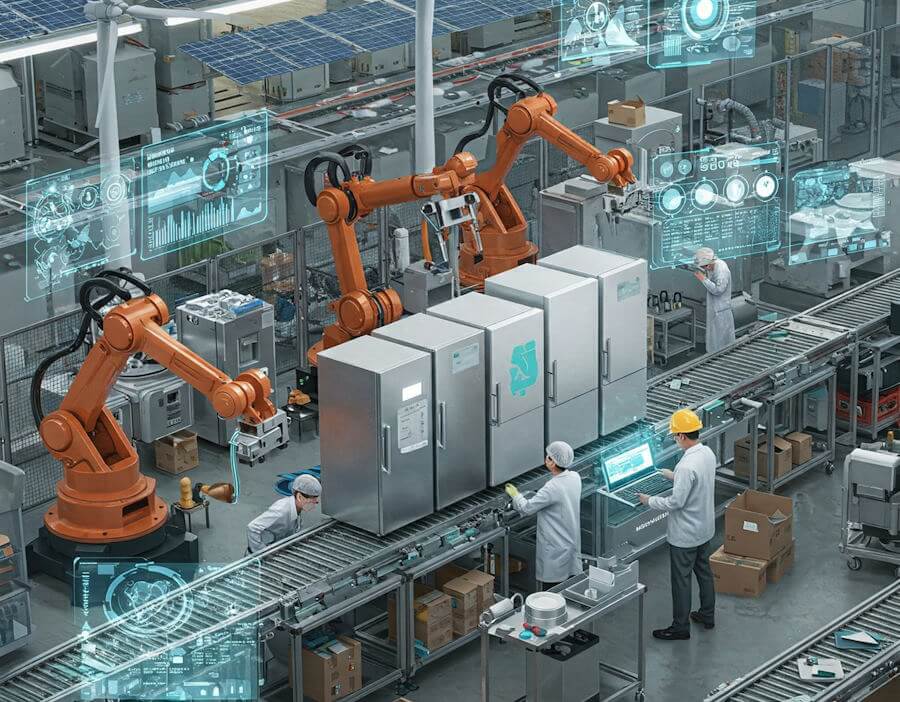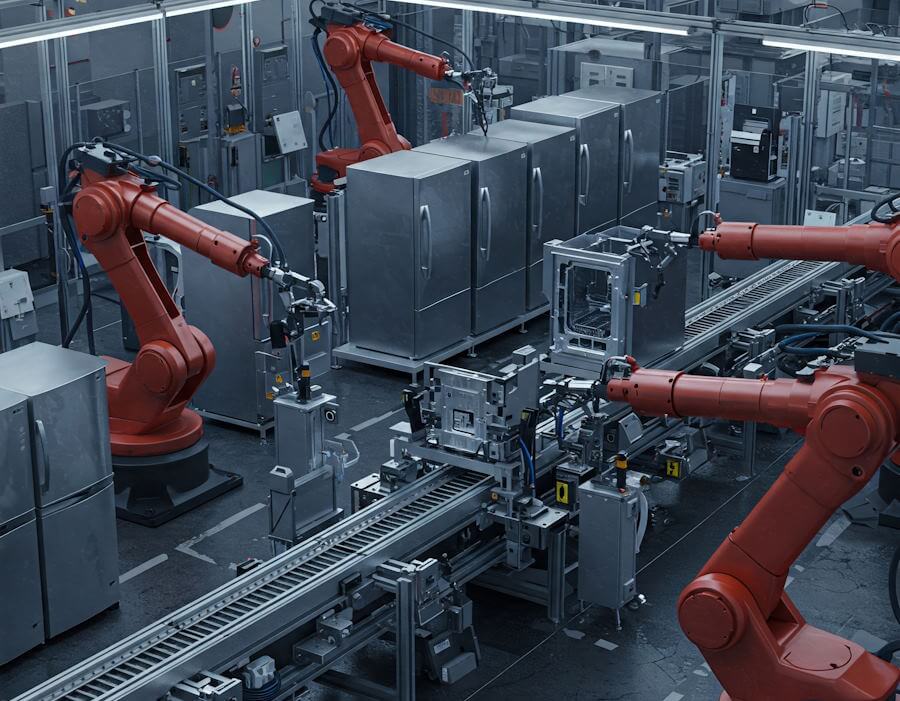The home appliance manufacturing industry plays a pivotal role in modern society, shaping the way individuals and families experience daily living. From refrigerators and washing machines to microwaves and air conditioners, these essential appliances significantly enhance convenience, comfort, and efficiency in our homes. As technology continues to evolve, the range of products available has expanded, integrating smart capabilities and energy-efficient features that cater to the demands of contemporary consumers.
Globally, the home appliance sector has substantial economic implications. This industry not only creates millions of jobs across various regions but also contributes significantly to gross domestic products (GDP) in numerous countries. The complexity of home appliance manufacturing encompasses various stages, including design, production, quality control, distribution, and after-sales service. Each phase is crucial in ensuring that products meet both market standards and consumer expectations.
However, the constant pressure to innovate and differentiate in a competitive marketplace often leads manufacturers to face a delicate balancing act between cost and quality. On one hand, reducing production costs is essential for remaining financially competitive; on the other hand, compromising product quality can lead to customer dissatisfaction and long-term reputational damage. Therefore, manufacturers must adopt comprehensive strategies that prioritize quality assurance while controlling costs. This challenge necessitates advancements in manufacturing processes, material selection, and supply chain management, underscoring the importance of strategic planning in this dynamic industry.
As we delve deeper into this topic, various elements surrounding the equilibrium of cost and quality within home appliance manufacturing will be examined, its implications on consumer choice, and the future direction of this vital sector.
Understanding Costs in Manufacturing
Home appliance manufacturing involves several cost components that collectively determine the overall production expenditure. These costs can typically be categorized into four major areas: raw materials, labor, overhead, and shipping. Each of these plays a crucial role in shaping pricing strategies and profit margins for manufacturers.
Raw materials include the essential components and materials required to create appliances, such as metals, plastics, and electronics. The fluctuating prices of these materials can directly impact the total manufacturing cost. For instance, an increase in the price of steel can raise the overall cost of manufacturing refrigerators and washing machines. Consequently, manufacturers must continually assess material suppliers and market trends to obtain the best prices without compromising on quality.
Labor costs represent another significant factor, encompassing wages, benefits, and training of employees involved in the production process. As skilled labor becomes scarce in some regions, the competitive market for skilled technicians has driven costs higher. Manufacturers need to invest in effective training programs to develop their workforce while still maintaining efficiency to prevent excessive labor costs from eroding profit margins.
Overhead costs, including utilities, rent, and equipment depreciation, also influence manufacturing expenses. With multiple appliances produced simultaneously, managing these fixed costs becomes essential to maintaining competitiveness. Manufacturers must analyze their operational processes to streamline overheads, ensuring that the overall cost structure remains advantageous.
Finally, shipping costs can vary dramatically depending on the distance between manufacturing facilities and distribution points. Effective logistics management can reduce these expenses, making it vital for manufacturers to partner with reliable shipping companies to enhance distribution efficiency. Recognizing and optimizing each of these cost components is crucial for home appliance manufacturers aiming to strike the right balance between cost and quality while ensuring profitability.
Importance of Quality in Home Appliances
In the realm of home appliance manufacturing, the significance of quality cannot be overstated. Consumers today are increasingly discerning, with heightened expectations regarding the durability and reliability of the products they purchase. Quality home appliances are designed to perform consistently over time, offer enhanced functionality, and minimize the need for frequent repairs or replacements. This durability not only translates into satisfaction for the consumer but also contributes to long-term cost savings, as high-quality appliances typically have longer lifespans than their lower-quality counterparts.
Reliability is another crucial aspect of quality in home appliances. Consumers rely on these devices for everyday tasks, from cooking and cleaning to maintaining comfortable living environments. An appliance that malfunctions or fails can cause significant inconvenience and frustration. Furthermore, performance is a vital factor that often accompanies quality. High-quality appliances typically operate more efficiently, saving energy and resources while delivering superior results. As energy conservation becomes an increasing priority for households, consumers gravitate towards those products that exemplify both quality and efficient performance.
Safety is equally paramount when considering the importance of quality in home appliances. Inferior products may pose serious risks, including electrical hazards or malfunctioning devices that can lead to fires. Consequently, manufacturers face not only the risk of financial loss through recalls and repairs but also the potential damage to their brand reputation. A single incident involving a faulty appliance can lead to a significant loss of consumer trust, adversely affecting a company’s standing in the market. Thus, upholding high standards in manufacturing quality is essential for maintaining a loyal customer base and fostering positive brand perception. In conclusion, quality in home appliances is integral to meeting consumer expectations and ensuring both safety and performance, ultimately influencing brand success.
Strategies for Balancing Cost and Quality
Balancing cost and quality in home appliance manufacturing requires the implementation of effective strategies that can streamline operations while ensuring the durability and performance of the products. One widely recognized approach is lean manufacturing, which focuses on minimizing waste and maximizing value. This method encourages manufacturers to evaluate every step of their production process, thereby eliminating any non-value-added activities. For instance, a prominent appliance manufacturer may conduct time and motion studies to identify inefficiencies, subsequently reconfiguring workflows to enhance productivity.
Another vital strategy is just-in-time (JIT) inventory management, which involves acquiring materials only as they are needed in the production process. This approach reduces the costs associated with storing excess inventory while ensuring that high-quality materials are available for manufacturing. For example, companies like Toyota have utilized JIT systems effectively, allowing them to respond to market demands swiftly while maintaining a focus on quality.
Investing in technology also plays a significant role in balancing cost and quality. Automation and advanced manufacturing technologies can enhance precision, reducing the likelihood of defects while lowering labor costs. By employing robotics and smart manufacturing techniques, companies can produce home appliances with higher consistency and efficiency. For instance, a manufacturer that has integrated cutting-edge robotics into its assembly line has seen improvements in production speed and quality assurance.
Lastly, staff training is essential for harmonizing cost and quality. A well-trained workforce is more adept at maintaining quality standards while executing tasks efficiently. By prioritizing continuous education and skills development, manufacturers can cultivate a culture of quality throughout their operations. An example can be seen in companies that implement regular training programs on quality control measures, resulting in lower defect rates and enhanced product reliability.
The Role of Technology in Manufacturing
Technology plays a pivotal role in the home appliance manufacturing industry by driving efficiency and enhancing product quality. Automation is one of the foremost technologies adopted within manufacturing facilities. With the integration of robotics and automated systems, manufacturers can achieve greater production speeds and consistency. This has resulted in reduced labor costs and minimized human error, contributing to a lower overall production cost without compromising the quality of the final product.
In addition to automation, the use of advanced materials has also transformed home appliance manufacturing. New composite materials and innovations in plastic manufacturing allow for lightweight but durable products that meet consumer demands for efficiency. These materials not only improve the longevity of appliances but also contribute to energy efficiency, which is a critical concern for environmentally conscious consumers. The ability to select high-performance materials can delineate a brand in a competitive marketplace.
Moreover, smart manufacturing processes fueled by the Internet of Things (IoT) and artificial intelligence (AI) have revolutionized production workflows. By employing predictive maintenance and real-time monitoring systems, manufacturers can optimize their operations, reducing downtime and maximizing resource efficiency. This allows for a seamless adaptation to changing market dynamics, ensuring that appliances are not only manufactured at a lower cost but also meet stringent quality standards consistently.
Furthermore, in the age of digitalization, the incorporation of advanced software systems for design and testing can streamline the development phase of home appliances. 3D modeling and simulation software provide manufacturers with the tools needed to test design iterations rapidly, leading to better products reaching consumers faster. Thus, the integration of these technological advancements indicates a significant stride towards aligning cost-effectiveness with quality assurance in home appliance manufacturing.
Sustainability and Its Impact on Costs and Quality
In recent years, sustainability has emerged as a pivotal focus within the home appliance manufacturing sector. As consumers become increasingly conscious of environmental impact, manufacturers are compelled to adopt eco-friendly practices. This shift towards sustainability has significant implications for both costs and quality in the production of appliances. Implementing sustainable practices often requires initial investments in new technologies, materials, and processes. However, these upfront costs can be offset by long-term savings gained through energy-efficient production methods and reduced waste.
Adopting sustainable practices can improve the overall quality of home appliances. For instance, manufacturers that prioritize sustainability tend to focus on the durability and longevity of their products. This results in appliances that not only use less energy but also have a longer lifespan, thus reducing the need for replacement and the associated costs. Moreover, products developed with sustainable materials and processes often appeal to a growing segment of environmentally-conscious consumers. This customer demographic is not only looking for high-quality products but is also inclined to support brands that align with their values.
Additionally, sustainable practices can enhance brand reputation, leading to increased customer loyalty and potential market expansion. As companies invest in greener technologies, they often find efficiencies that contribute to lower operational costs over time. These savings can be passed on to consumers in the form of competitive pricing, further encouraging the adoption of sustainable appliances in households. In this way, sustainability acts as a compelling business strategy that harmonizes cost management with the provision of high-quality home appliances, ultimately benefiting both manufacturers and consumers alike.
The Role of Supply Chain Management
Effective supply chain management (SCM) plays a vital role in the home appliance manufacturing industry, where balancing cost and quality is paramount. At the core of this process lies the intricate relationship between suppliers, manufacturers, and logistics. Each component of the supply chain must be optimized to achieve efficiency and maintain high product standards.
Choosing the right suppliers is essential. This selection process involves assessing not only the cost of materials but also their quality and reliability. Manufacturers must establish partnerships with suppliers who share their commitment to producing quality products. A reliable supplier can ensure consistent delivery of materials, which is crucial for maintaining production schedules and minimizing delays. Moreover, selecting suppliers based on their track record of quality can significantly reduce defects and the associated costs of rework or returns.
Logistics further complicates the equation. Efficient logistics management ensures that materials move seamlessly between suppliers and manufacturers. This involves optimizing transportation costs while maintaining the quality of materials, as improper handling during transit can lead to damage or degradation. Streamlined logistics processes enable manufacturers to respond promptly to changing market demands, which is essential for maintaining a competitive edge.
Furthermore, collaboration within the supply chain fosters innovation. By working closely with suppliers and logistics partners, manufacturers can explore new materials and technologies that enhance product quality without significantly increasing costs. This collaboration can lead to the development of eco-friendly options or improved designs that appeal to consumers, ultimately benefiting the bottom line.
In conclusion, effective supply chain management is critical for home appliance manufacturers aiming to balance cost and quality. By prioritizing the right partnerships, optimizing logistics, and fostering innovation, businesses can create a seamless manufacturing process that meets consumer demands while remaining cost-effective.
Case Studies: Success Stories in Balancing Cost and Quality
The home appliance manufacturing industry is replete with examples of companies that have successfully navigated the challenging waters of balancing cost and quality. One prominent case is that of Whirlpool Corporation. By adopting advanced manufacturing technologies, such as robotic automation and predictive maintenance, Whirlpool was able to reduce production costs without compromising on product integrity. This strategic investment in technology not only improved efficiency but also enhanced product quality, leading to increased customer satisfaction and loyalty.
Another notable example is Bosch, which has implemented a lean manufacturing approach across their facilities. By focusing on minimizing waste and streamlining processes, Bosch has been able to lower costs significantly while maintaining high standards of quality. This approach has resulted in a more agile production system where they can quickly adapt to changing market demands, thereby reducing overhead costs and optimizing resource allocation.
Additionally, LG Electronics provides valuable insights into balancing cost with quality through their dedication to research and development (R&D). By investing heavily in R&D, LG has been able to innovate new products that outperform competitors, thus justifying a higher price point while still managing costs through efficient production techniques. They faced challenges in terms of initial investment and the uncertainty of market reception; however, their focus on high-quality, innovative products yielded strong market performance and bolstered brand reputation.
These case studies illustrate critical strategies that home appliance manufacturers can adopt—leveraging technology, implementing lean methodologies, and focusing on innovative development. Each company faced unique obstacles, yet their commitment to balancing cost and quality ultimately led to sustained success and competitive advantage in the dynamic market of home appliances. As the industry continues to evolve, these lessons can inspire other manufacturers to adopt similar strategies for long-term efficacy.
Future Trends in Home Appliance Manufacturing
The home appliance manufacturing industry is undergoing significant evolution, driven by technological advancements, changing consumer preferences, and evolving regulatory frameworks. As manufacturers strive to achieve a balance between cost and quality, several trends are emerging that could shape the future landscape of this sector.
One of the most prominent trends is the integration of smart technology into appliances. Consumers are increasingly seeking products that enhance convenience and efficiency, leading to a surge in demand for smart refrigerators, ovens, and washers. These appliances not only offer advanced features but also provide energy-saving benefits that appeal to environmentally-conscious buyers. As such, manufacturers are likely to invest more heavily in the research and development of innovative technologies that improve functionality while optimizing production costs.
Additionally, sustainability is becoming a central concern in home appliance manufacturing. With consumers prioritizing eco-friendly products, manufacturers must consider the lifecycle impact of their appliances, focusing on materials, energy use, and recyclability. This shift towards sustainable manufacturing practices is further endorsed by stricter regulations aimed at reducing waste and promoting sustainable consumption. Companies that adapt to these demands may find themselves at a competitive advantage, achieving cost-effectiveness while maintaining a commitment to quality and environmental responsibility.
Furthermore, the rise of e-commerce and direct-to-consumer sales channels is reshaping how appliances are marketed and sold. Consumers expect seamless online experiences, and companies are leveraging digital platforms to reach wider audiences and streamline operations. This shift compels manufacturers to reconsider their pricing strategies, ensuring they provide value while maintaining reasonable production costs.
In summary, the future of home appliance manufacturing is likely to be influenced by technological innovations, a strong focus on sustainability, and shifts in consumer purchasing habits. These factors will play a crucial role in shaping how companies balance cost with quality in an increasingly competitive marketplace.



